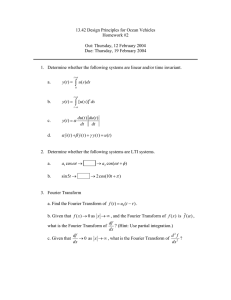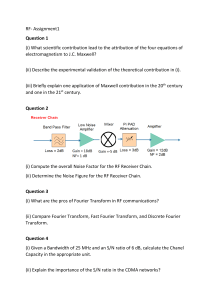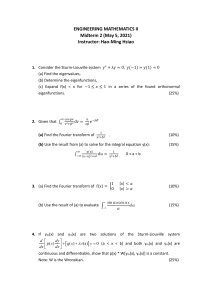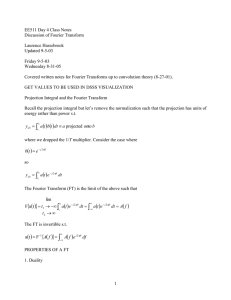M.S. COMPREHENSIVE EXAMINATION IN APPLIED MATHEMATICS January 14, 2003
advertisement
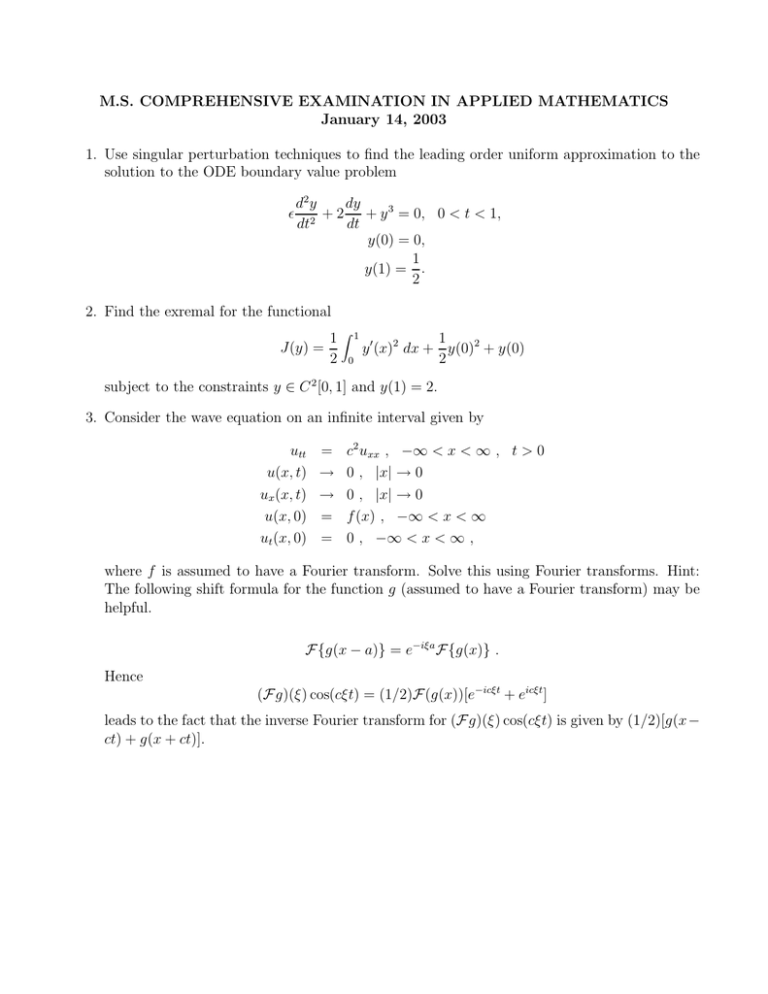
M.S. COMPREHENSIVE EXAMINATION IN APPLIED MATHEMATICS
January 14, 2003
1. Use singular perturbation techniques to find the leading order uniform approximation to the
solution to the ODE boundary value problem
d2 y
dy
+ 2 + y 3 = 0, 0 < t < 1,
2
dt
dt
y(0) = 0,
1
y(1) = .
2
2. Find the exremal for the functional
1
J(y) =
2
Z
1
0
1
y 0 (x)2 dx + y(0)2 + y(0)
2
subject to the constraints y ∈ C 2 [0, 1] and y(1) = 2.
3. Consider the wave equation on an infinite interval given by
utt
u(x, t)
ux (x, t)
u(x, 0)
ut (x, 0)
=
→
→
=
=
c2 uxx , −∞ < x < ∞ , t > 0
0 , |x| → 0
0 , |x| → 0
f (x) , −∞ < x < ∞
0 , −∞ < x < ∞ ,
where f is assumed to have a Fourier transform. Solve this using Fourier transforms. Hint:
The following shift formula for the function g (assumed to have a Fourier transform) may be
helpful.
F {g(x − a)} = e−iξa F {g(x)} .
Hence
(F g)(ξ) cos(cξt) = (1/2)F (g(x))[e−icξt + eicξt ]
leads to the fact that the inverse Fourier transform for (F g)(ξ) cos(cξt) is given by (1/2)[g(x −
ct) + g(x + ct)].





